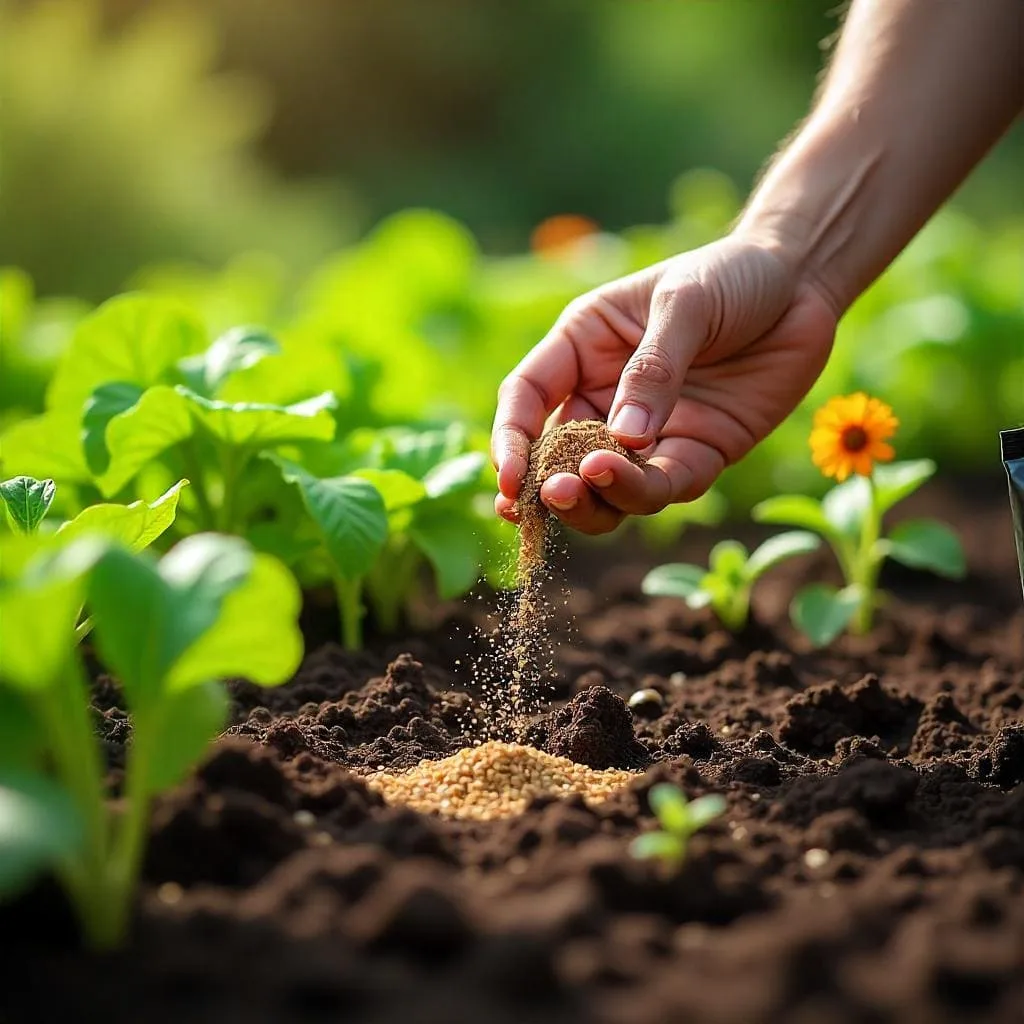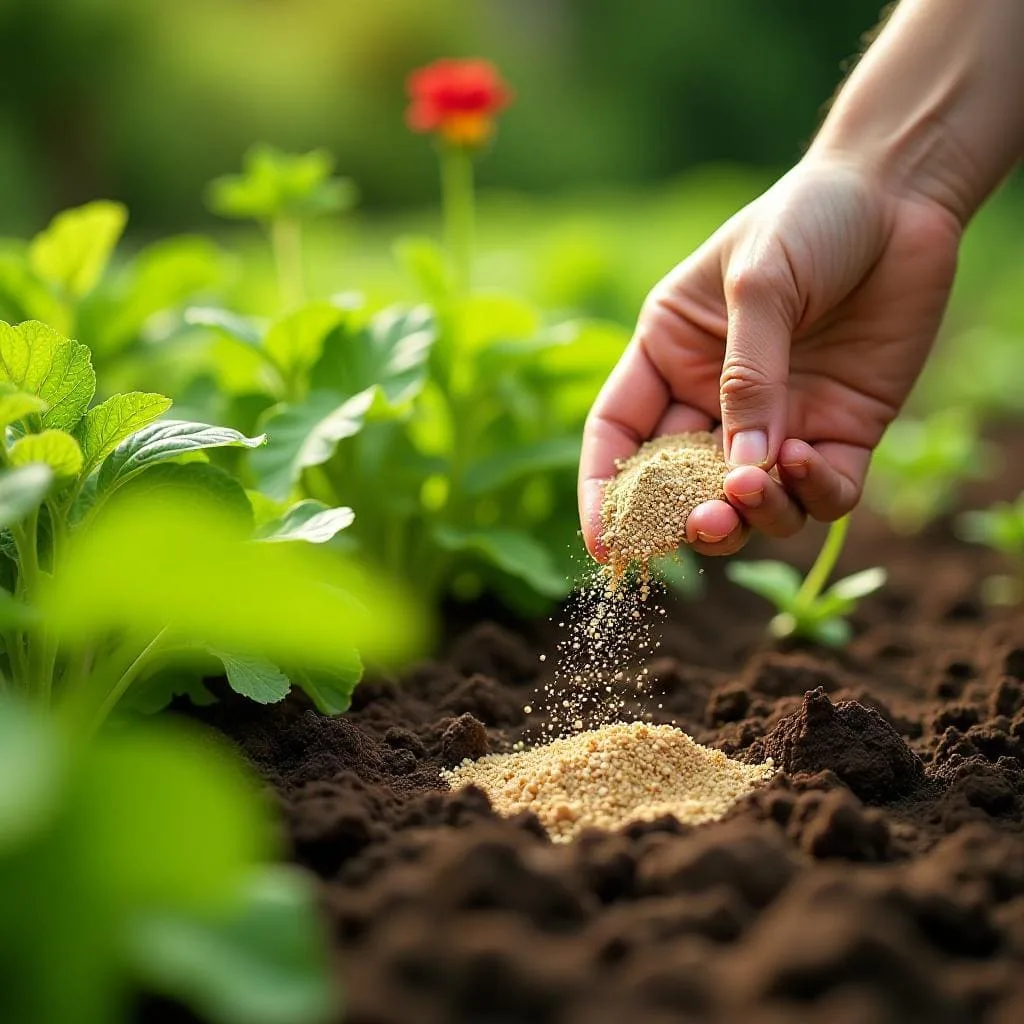Plant fertilizer provides essential nutrients that help plants thrive. Whether you’re growing indoor houseplants or outdoor gardens, the right fertilizer boosts growth, strengthens roots, and encourages vibrant blooms. Understanding when, how, and what to use ensures your plants get exactly what they need without overdoing it.
Quick Facts About Plant Fertilizers
- Fertilizers provide essential nutrients that plants need to grow, especially when the soil lacks these elements.
- These nutrients are classified into macronutrients (like nitrogen, phosphorus, and potassium) and micronutrients (such as iron, zinc, and copper).
- Fertilizers come in two primary forms: organic and inorganic.
- Over-fertilizing can harm plants and the environment. Always follow recommended guidelines for application.
Why Plants Need Nutrients
Plants, like all living organisms, require a steady supply of nutrients to thrive. In natural ecosystems, plants absorb nutrients from the soil, water, and air. However, in managed settings like gardens or farms, these nutrients may become depleted over time, leading to nutrient deficiencies. Fertilizers help replenish the soil with essential elements, ensuring plants have access to the nutrients they need to grow strong and healthy.
Macronutrients and Micronutrients
- Macronutrients, which are required in larger amounts, include:
- Nitrogen (N): Promotes leafy, vegetative growth.
- Phosphorus (P): Supports root development and flowering.
- Potassium (K): Aids in overall plant health and disease resistance.
- Micronutrients, needed in smaller quantities, include:
- Iron, Zinc, Copper, Manganese, Boron, and others that play specialized roles in plant development.
Understanding Nutrient Availability in Soils
Not all nutrients in the soil are readily available for plants to absorb. Several factors can influence how easily plants can access these nutrients, including soil texture, pH, and environmental conditions.
Soil Texture and Its Role
Soil texture refers to the proportion of sand, silt, and clay in the soil. The texture affects how well the soil can retain water and nutrients. For example:
- Sandy soils drain quickly, which can lead to nutrient leaching.
- Clay soils hold nutrients better but may become compacted, limiting root growth.
How Soil pH Affects Nutrients
Soil pH is a measure of how acidic or alkaline the soil is, and it directly impacts nutrient availability. Most plants prefer a slightly acidic to neutral pH (6.0 to 7.0). When the pH is too low (acidic) or too high (alkaline), certain nutrients become less available to plants. For instance:
- Acidic soils may cause deficiencies in calcium and magnesium.
- Alkaline soils can limit the availability of iron, manganese, and phosphorus.
Factors That Influence Nutrient Availability
Several other factors can affect how easily plants absorb nutrients, including moisture levels, temperature, and the presence of organic matter. Well-drained soils with adequate moisture and good aeration promote better nutrient uptake.
Choosing the Right Fertilizer for Your Plants
Selecting the right fertilizer can be a bit overwhelming, especially with so many options available. However, understanding the basics of fertilizer labels and analyzing your plant’s specific needs will help you make an informed decision.
Understanding Fertilizer Labels and Analysis
Fertilizer packaging typically displays three numbers, known as the N-P-K ratio, representing the percentage of nitrogen (N), phosphorus (P), and potassium (K) in the product. For example, a fertilizer labeled 10-10-10 contains 10% nitrogen, 10% phosphorus, and 10% potassium.
- Nitrogen (N) promotes leafy growth.
- Phosphorus (P) supports root development and flower production.
- Potassium (K) strengthens the plant’s overall health and disease resistance.
Matching Fertilizer to Plant Needs
Different plants have varying nutrient requirements. For example:
- Leafy vegetables like lettuce may require more nitrogen to support lush foliage.
- Flowering plants benefit from higher phosphorus to promote blooms.
- Root vegetables like carrots need balanced fertilizers to support both root and shoot growth.
Understanding the specific needs of your plants will help you choose the right fertilizer to optimize their growth.

Inorganic vs. Organic Fertilizers: What’s the Difference?
When it comes to fertilizers, there are two main categories: inorganic and organic. Each type has its advantages and potential drawbacks, depending on your gardening goals and the specific requirements of your plants.
Overview of Inorganic Fertilizers
Inorganic fertilizers, also known as synthetic fertilizers, are manufactured from chemical compounds. They are formulated to provide plants with immediate access to nutrients. These fertilizers are often used for their:
- Precision and consistency: Inorganic fertilizers deliver exact amounts of nutrients.
- Fast-acting results: Plants can quickly absorb the nutrients, leading to rapid growth.
However, overuse of inorganic fertilizers can lead to problems such as soil degradation, nutrient imbalances, and environmental pollution.
Organic Fertilizers: Benefits and Practices
Organic fertilizers are derived from natural sources like compost, manure, and decomposed plant material. While they tend to act more slowly than inorganic fertilizers, they offer several long-term benefits:
- Improve soil structure: Organic materials enhance the soil’s ability to retain moisture and nutrients.
- Promote microbial activity: Organic fertilizers encourage the growth of beneficial organisms that help break down nutrients for plant use.
Additional Advantages of Using Organic Materials
Beyond just providing nutrients, organic fertilizers contribute to the overall health of your garden’s ecosystem. They improve soil fertility over time, making plants more resilient to pests and diseases.
Common Plant Nutrient Deficiencies and How to Fix Them
Even with proper fertilization, plants sometimes develop nutrient deficiencies. Identifying and addressing these deficiencies early can prevent long-term damage.
Nitrogen Deficiency
Symptoms of nitrogen deficiency include yellowing leaves, especially the older ones, and stunted growth. To correct this, apply a nitrogen-rich fertilizer like blood meal or fish emulsion.
Phosphorus and Potassium Deficiencies
Phosphorus-deficient plants may develop purple or dark green leaves and experience poor flowering. Potassium deficiencies can cause leaf edges to turn brown and curl. Correct these deficiencies by using a balanced fertilizer or one specifically designed for phosphorus or potassium.
Addressing Micronutrient Deficiencies
Micronutrient deficiencies, such as iron or magnesium, often manifest as yellowing between the veins of leaves. Applying a complete micronutrient fertilizer or foliar sprays can help resolve these issues quickly.
Sustainable Fertilizing Practices
Sustainable fertilization is all about maintaining soil health while minimizing environmental impact. By following a few best practices, you can ensure your plants get the nutrients they need without harming the environment.
Using Fertilizers Wisely and Efficiently
- Test your soil before applying fertilizers to avoid over-application and potential nutrient imbalances.
- Follow package instructions: More fertilizer isn’t always better. Applying too much can lead to runoff, polluting nearby water sources.
Balancing Fertilizer Use to Avoid Overapplication
Over-fertilizing can harm both your plants and the environment. Excess nutrients can build up in the soil, making it difficult for plants to absorb water and leading to pollution of waterways through runoff.

Alternative Fertilizer Sources
In addition to store-bought fertilizers, there are several natural and eco-friendly options for enriching your soil.
Composting: Nature’s Fertilizer
Compost is made from decomposed organic matter such as kitchen scraps, yard trimmings, and leaves. It provides a slow-release source of nutrients while improving soil structure and water retention.
Farm Manure and Its Benefits
Manure from farm animals like cows, horses, and chickens is another excellent organic fertilizer. It’s rich in nitrogen and other essential nutrients but should be well-composted before use to prevent burning plants or introducing harmful pathogens.
Green Manure: Boosting Soil Fertility Naturally
Green manure refers to cover crops like clover or alfalfa that are grown, then tilled back into the soil to improve its quality. These plants add organic matter, prevent erosion, and increase nutrient availability.
Liming: How It Helps Soil Health
Lime is a natural soil amendment that helps raise the pH of acidic soils, making nutrients more accessible to plants. It’s particularly useful for crops that prefer neutral to slightly alkaline conditions.
Methods of Applying Fertilizers Effectively
The method you choose to apply fertilizer can significantly affect how well the nutrients are absorbed by your plants.
Surface Application
This involves spreading fertilizer evenly over the soil surface. It’s ideal for lawns and garden beds, but care must be taken to water the fertilizer in to avoid runoff.
Incorporating Fertilizers Into the Soil
For crops or garden beds, it’s often beneficial to mix fertilizers into the soil before planting. This ensures the nutrients are readily available to the plant roots.
Foliar Feeding
Foliar feeding involves spraying a diluted fertilizer solution directly onto plant leaves. This method allows plants to absorb nutrients through their leaves, providing a quick boost in cases of deficiency.
How to Fertilize Different Types of Plants
Different plants have unique fertilization needs, so it’s essential to tailor your approach.
Fertilizing Vegetables
Vegetables are heavy feeders that require regular fertilization throughout the growing season. Use a balanced fertilizer or one higher in nitrogen for leafy greens and phosphorus for root vegetables.
Fertilizing Houseplants
Houseplants generally require less fertilizer than outdoor plants. A diluted liquid fertilizer applied once a month during the growing season is sufficient.
Fertilizing Flowering Plants
Flowering plants benefit from fertilizers high in phosphorus. Apply at the start of the growing season to encourage blooming and repeat as necessary.
General Guidelines for Safe and Effective Fertilizer Use
- Always follow the recommended application rates to prevent over-fertilization.
- Apply fertilizers during the growing season when plants are actively absorbing nutrients.
- Water the soil after applying fertilizer to help the nutrients penetrate the root zone and prevent runoff.
FAQ
The frequency of fertilization depends on the specific plant and soil conditions. Generally, most plants benefit from fertilization every 4-6 weeks during the growing season.
Yes, over-fertilizing can damage your plants by causing nutrient imbalances, burning roots, and promoting excessive salt buildup in the soil.
Both organic and inorganic fertilizers have their benefits. Organic fertilizers improve soil health over time, while inorganic fertilizers provide more immediate results.
Signs your plants need fertilizer include slow growth, yellowing leaves, and poor blooming. Soil testing can also help determine nutrient deficiencies.
Most plants, especially perennials, go dormant in the winter and don’t require fertilization. However, houseplants or plants in tropical regions may still benefit from light feeding.

